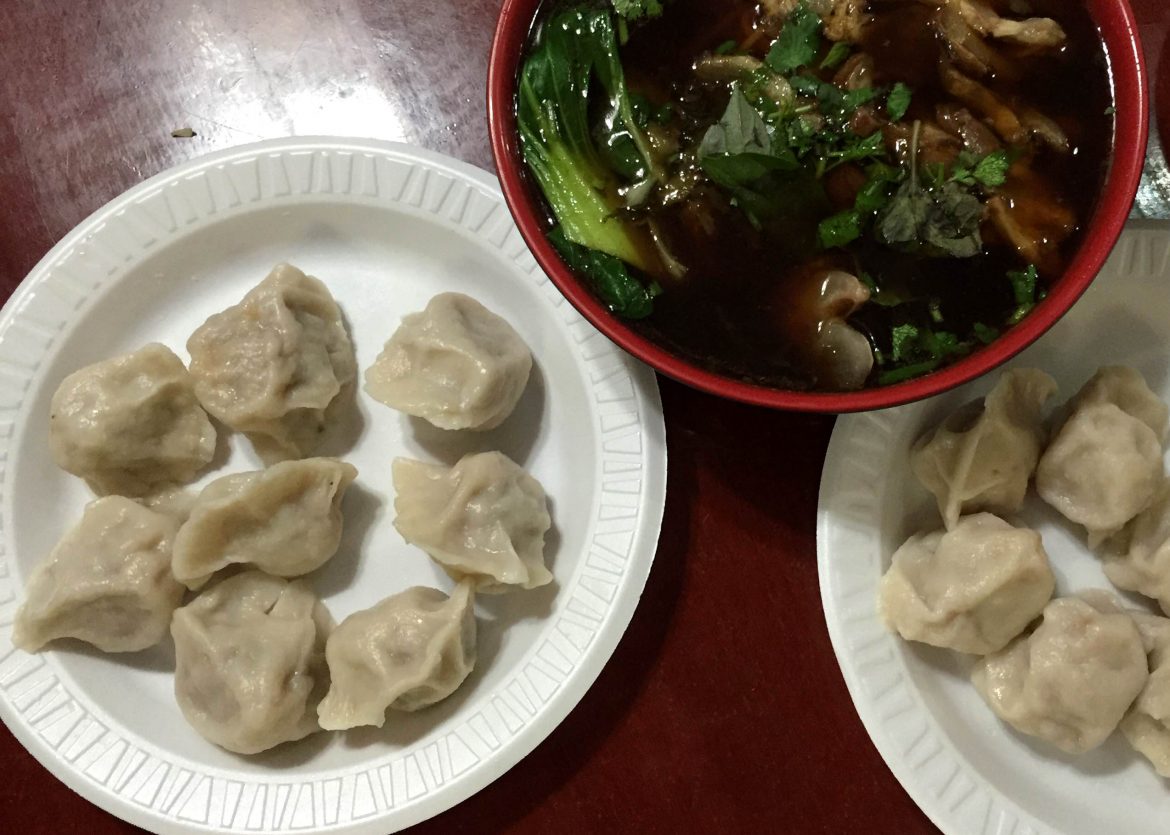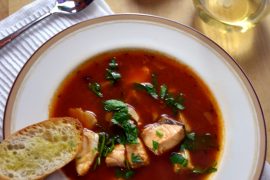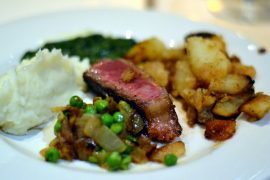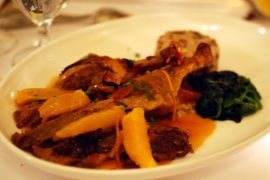The mile-long stretch from Elmhurst to Jackson Heights is among the most exciting culinary destinations in New York. As everyone who lives there knows, Queens is one of the most ethnically diverse places in the world. Indeed, just that tiny section of it boasts authentic restaurants serving food from all across the globe, including from Thailand, Vietnam, India, Tibet, Nepal, Colombia, and several regions of China.
If you’re looking for me, that might be a good place to start.
Hand-Made Dumplings and Noodles at Lao Bei Fang
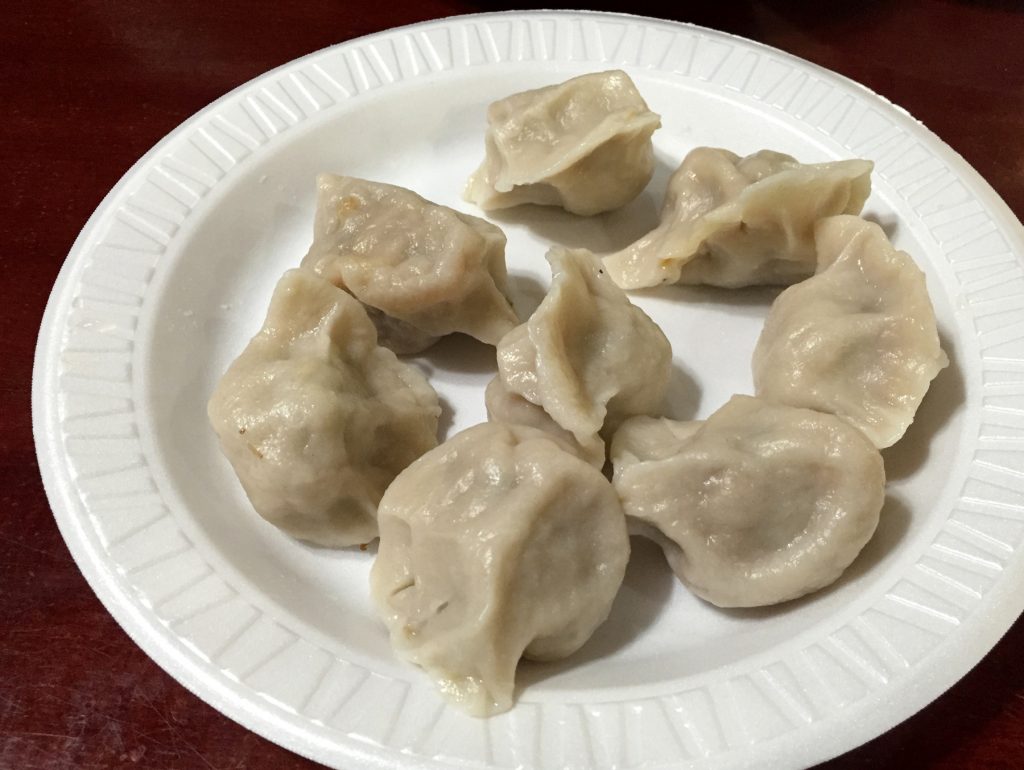
A crowded two blocks of Broadway from Dongan to Elmhurst avenues, passing under the Long Island Railroad tracks, may be New York’s tiniest and most interesting Chinatown. Only 25 minutes from Midtown by subway and a reasonable drive from Brooklyn without traffic, Elmhurst makes for a great food excursion. I headed out there with some friends the other day after work, looking to sample some of our favorite options.
Hungry patrons go about their nibbling and slurping as if such a spectacle were an ordinary part of daily life.We started our Elmhurst food tour at Lao Bei Fang, a hole-in-the wall featuring hand-made dumplings, hand-pulled noodles, and hand-warming soups. Large, steaming bowls adorn each table. Orders are placed at the counter and dumplings are dished out eight at a time on styrofoam plates, soups served in generous bowls that customers stack up themselves on their way out. In the back, an employee energetically pulls springy dough into noodles, hurling it through the air, slamming it on the counter, and twisting it into long knots only to untwist it suddenly with a turn of the arm and repeat.
The impressive hand-pulling method turns out noodles that are springy and impossibly thin. We joined the others in hungrily nudging knots of them into our mouths with chopsticks, inelegantly slurping the warm broth straight from the bowl. Our protein of choice: beef tendon! It was a little tough to my admittedly American palate, but it surely contributed to the satisfying complexity of the broth.
Dumplings were pillowy and juicy, rustically shaped and best enjoyed with a hit of black vinegar or a splash of slick chili oil, or both. I particularly liked the pork and chive, which paired the meaty filling with an aromatic sharpness from the chives.
Henan Cuisine at Uncle Zhou
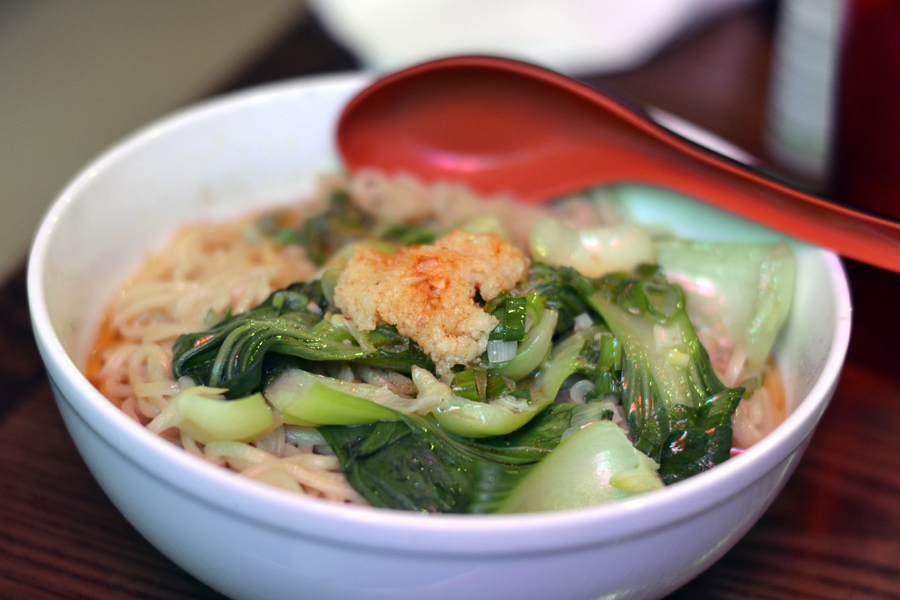
Up the block, our beloved Uncle Zhou, a rare Henan (not Hunan) restaurant, was randomly closed on a Tuesday. It serves up arguably even better noodles (but inferior dumplings), the ritual throwing, slamming, and pulling of which is performed in the kitchen, disappointingly out of the view of customers.
Uncle Zhou’s signature noodle preparation are the yóu pō miàn (油泼面), mistranslated on the menu as “dial oil” noodles and probably better-translated as “oil splashed” noodles (Chef Steven Zhou didn’t know the word for “splashed” when he wrote the menu). They are prepared by laying finely minced garlic and crushed chilies atop a mound of al dente noodles, adorning them with bok choy and a hit of Chinese vinegar, and pouring over hot oil right before serving, gently mellowing the garlic while not fully cooking it, producing an intensely powerful garlicky flavor.
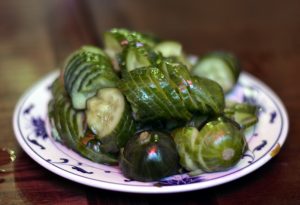
A meal at Uncle Zhou might start with a dish of their lightly brined cucumbers, impressively spiral-cut and served cool with the subtle breath of chilies. I consider obligatory the baked noodle and fish, with the fish served whole and topped with a web of crispy thin noodles that soften when mixed with a sweet and sour sauce that is neither too sweet nor too sour. A dish of “crispy spicy chicken in big tray” (not to be confused with the inferior “spicy big tray chicken,” a dish borrowed from the region of Xinjiang that is better at Manhattan’s Spicy Village) offers that exciting combination of chilies, spices, and mouth-numbing Sichuan pepper that we have come to expect from a good Henan restaurant.
Flatbread Sandwiches at Chinger
Across Broadway we wandered into Chinger, a cramped modern sandwich shop with a single high-top table. The name is an unfortunate combination of “Chinese” and “burger,” the unintended result of which reads like either a racial epithet or a Mexican slang term. (I prefer to rhyme it with “ginger.”) Fortunately, the food more than makes up for the poor name choice.
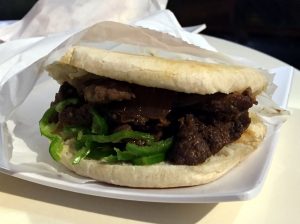
Chinger serves Chinese flatbread sandwiches (called “chingers”–go figure) from the region of Xi’an, similar to those that the Manhattan minichain Xi-an Famous Foods has made . . . er . . . famous. At Chinger there is a wider assortment, ranging from the traditional shredded pork to a vegetarian “brown gluten” with assorted vegetables. The bread is nice and chewy with a crisp exterior and the fillings are savory and juicy. I enjoyed the cumin beef chinger, which offers the tingling combination of earthy spice and heat one can find in a dish of cumin lamb at a good Sichuan or Hunan restaurant. The chilies had the seeds removed and did not overpower the beef or the fragrant cumin.
If one were feeling ambitious, as my companions and I were the other night, one might wander up Broadway (or take the subway one stop) to Jackson Heights. There, you would find spice laden Indian curries, juicy Tibetan momos, exotic Nepali specialties, and excellent Indian sweets . . .
(To be continued.)
